Burntisland Heritage
Collections
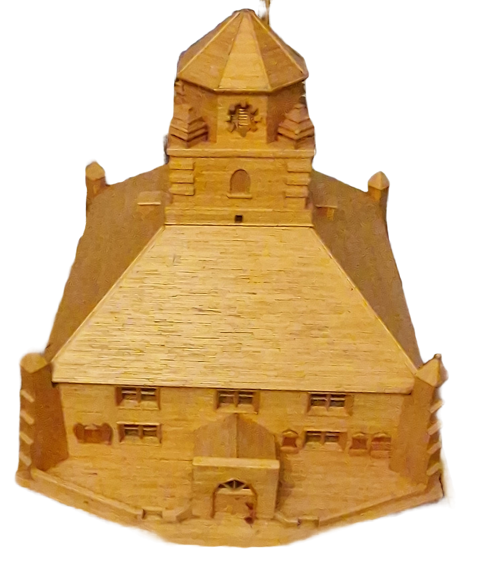
Matchstick Model of Parish Church
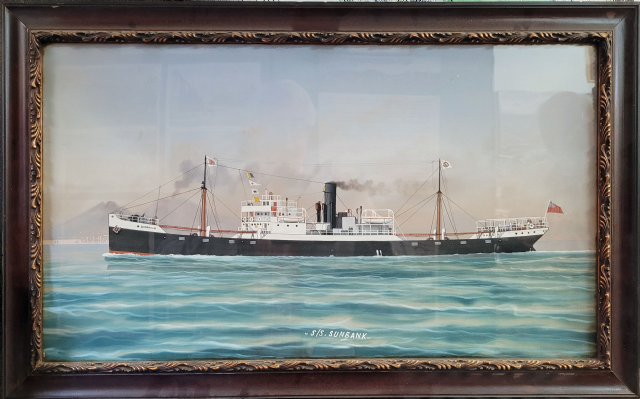
S.S. Sunbank First ship launched by Burntisland Shipbuilders
The SS Sunbank was the first ship launched by Burntisland Shipbuilders in June 1919. She had two sister ships, Suncliff, Sunfield. She was built for Mitchell Cotts & Co London. She was subsequently purchased by a Japanese company. She was torpedoed in 1943 by USS Seahorse.
This picture used to hang in the gatehouse of Burntisland Ship builders. It was gifted to Mr Brodie, leather merchant and councillor in Kirkcaldy, by Sir Wilfred and Lady Ayre. Mr Brodie did work for the Ayre's. When the Ayre's were moving from Whitehill in Aberdour, they gifted this picture to him, knowing his interest in shipping. Burntisland Heritage received the picture from Mr Brodie's widow, Nancy, and his daughter Fiona. We were delighted to receive the painting and Nancy and Fiona were delighted that the painting was returning to Burntisland.
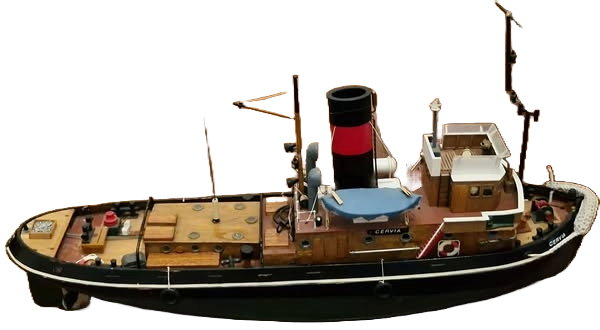
This model was constructed by the late Davie Todd of Burntisland
The Steam Tug Cervia
One of the last steam tugs still afloat
TS Cervia was ordered by the Ministry of War Transport as part of preparations for Operation Overlord, the allied invasion of Europe. She was built at the yard of Alexander Hall & Co. Ltd, Aberdeen, and launched on 21st January 1945. She was launched as Empire Raymond, the prefix given to all government ordered ships during the war. She was fitted out to war standards with an armoured plated wheelhouse and gun emplacements. She was powered by a triple-expansion steam engine and weighed over 350 tons. The boiler installed enabled use with oil-burners but could be quickly converted to coal firing. While employed as Empire Raymond, she worked on the conversion of the Cunard liner Queen Elizabeth, from troop ship back to passenger liner.
Withdrawn from service in the late 1940s, she was sold to the maritime towing business of William Watkins, for £36,000. As TS Cervia, she was employed in a towing and salvage roll throughout the UK. In 1954 TS Cervia was involved in an accident with the P&O liner Arcadia. She sank in Tilbury docks with the loss of the Skipper and five crew. Later that year she herself was salvaged and refurbished.
With the preference for more modern diesel vessels the Cervia was laid-up at Sheerness in 1971. In 1973 she was sold privately for £3,500 and underwent a refit and put back to work. In the 1970s, Cervia was owned by International Towing Ltd. and worked in the North Sea oil and gas Industry. TS Cervia is currently owned by Friends of The Steam Tug Cervia, who are dedicated to the preservation of the tug. www.steamtugcervia.co.uk
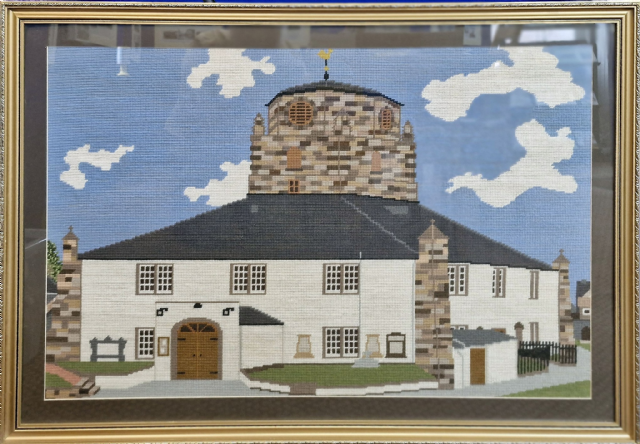
Tapestry of Parish Church worked by the late Davie Todd
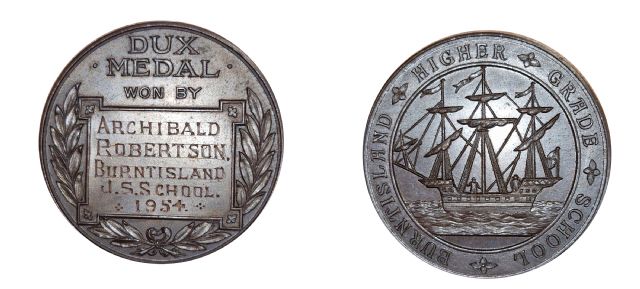
Burntisland Secondary School Dux Medal
Local lad, Archie Robertson, won the Dux medal from Burntisland Junior Secondary School in 1954. Archie who lives down south, asked his sister Anne (Morrison), to gift the medal to the town. I have not seen one before, it is marvellous to have something so precious.
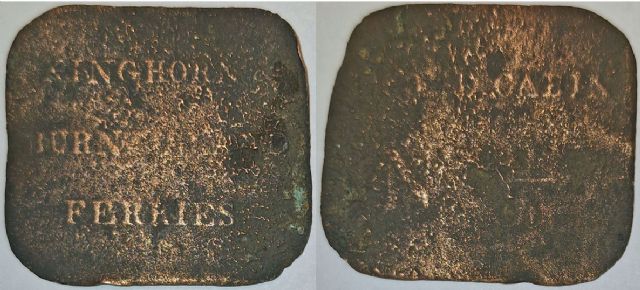
Ferry Token
Below is a token which was handed in. Perhaps someone could help with its history.
On one side it says "Kinghorn Burntisland Ferries"
on the other side we think it says "Second Cabin" there is then a large "N" and to the side of it is an "X" on top of "60".
We know that the ferries transferred from Pettycur to Burntisland in 1838. Prior to this the Pettycur ferries were sloops and would not have cabins as such. The token may well be from the period when John Gladstone was running the ferries. He introduced paddle steamers; we know that these had a forward and rear cabin. The Edinburgh and Northern Railway took over the route in 1846, likely they would have had their own tokens. Your help would be appreciated.
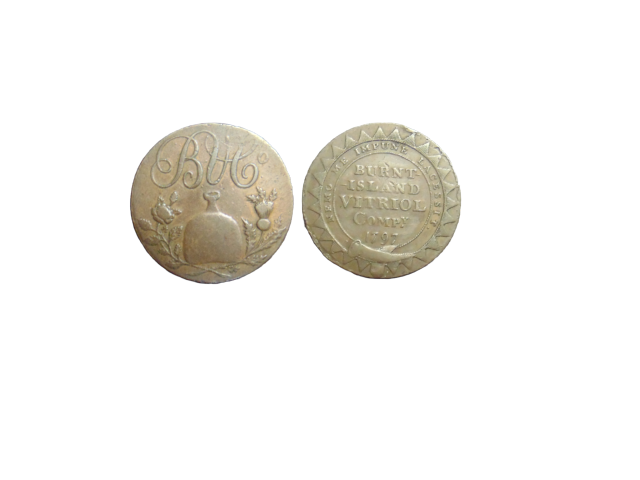
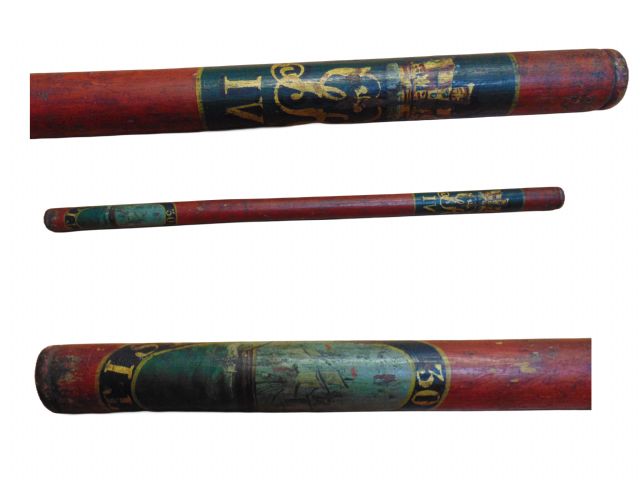
Sworn Constable Truncheon No. 30
Sworn Constable No. 30 George IV Truncheon
Prior to the introduction of County police forces in the early 19th century, several different officials carried out policing in Burntisland. These included night watchmen, town guards and sworn constables, whose powers were restricted to the burgh. The reason for the decoration is that in addition to being a weapon, the decoration was a sign of the holder’s authority. The position was unpaid, the quality and quantity of the decoration would be dependent on the means of the holder. As servants of the Crown, the most common decoration is the coat of arms of the reigning monarch, and the burgh in which the constable kept the peace.
The above example is a early example from the reign of George IV, 1762-1830. Unlike our Victorian example this truncheon has seen quite a bit of use.

Sworn Constable 27 Truncheon
Sworn Constable No. 27 Truncheon
Prior to the introduction of County police forces in the early 19th century, several different officials carried out policing in Burntisland. These included night watchmen, town guards and sworn constables, whose powers were restricted to the burgh. The reason for the decoration is that in addition to being a weapon, the decoration was a sign of the holder’s authority. The position was unpaid, the quality and quantity of the decoration would be dependent on the means of the holder. As servants of the Crown, the most common decoration is the coat of arms of the reigning monarch, and the burgh in which the constable kept the peace.
The above example is a rather fine specimen which the quality of the artwork would indicate that it may have been used for ceremonial purposes
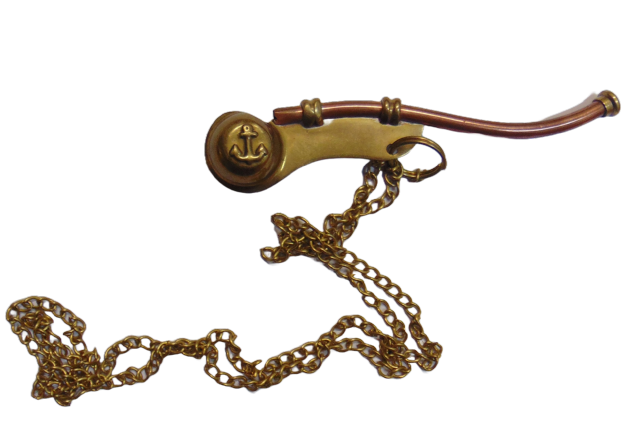
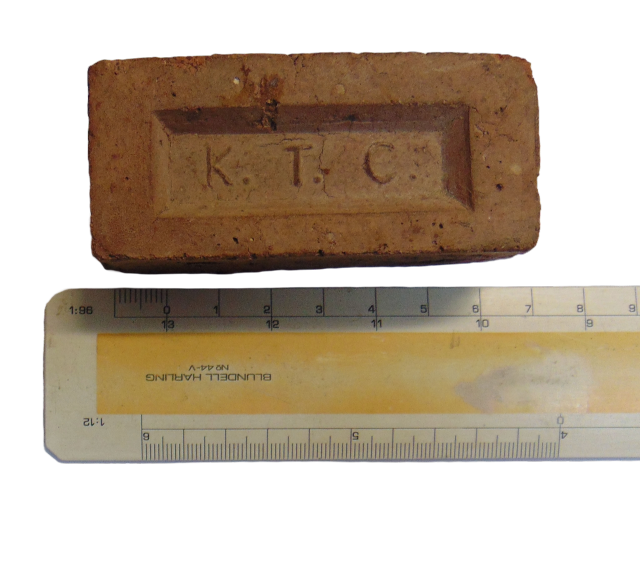
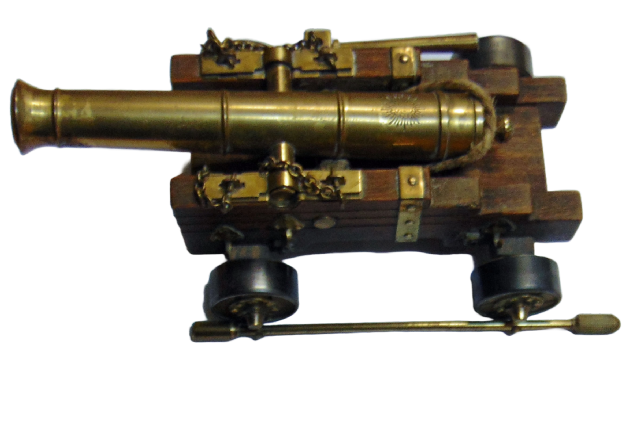
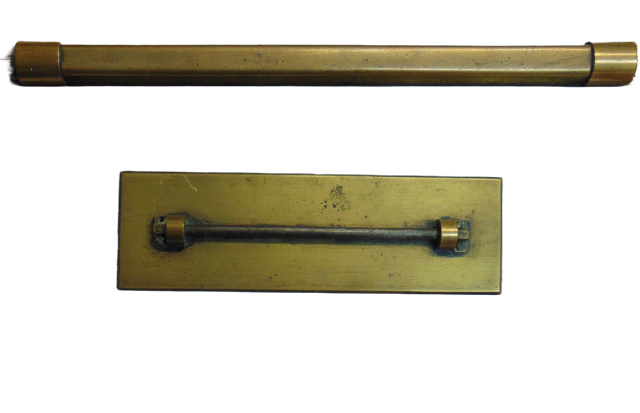
Brass Parallel Rolling Nautical Navigation Ruler
These heavy brass rulers had small wheels which allowed them to move quickly over charts, the weight was also an advantage for keeping maps and scarts flat. These examples are most likely mid 19th century.

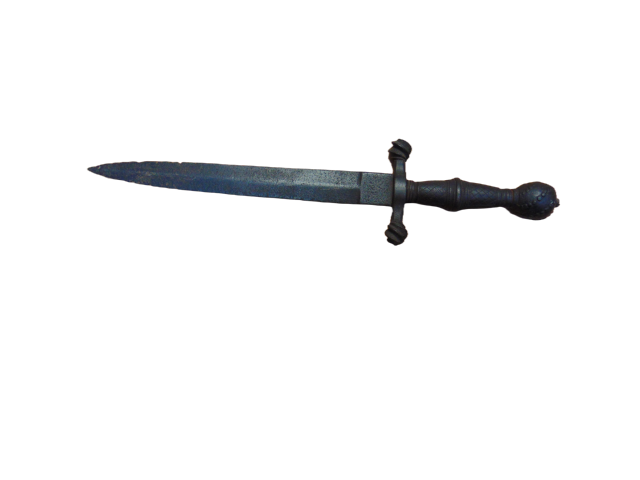
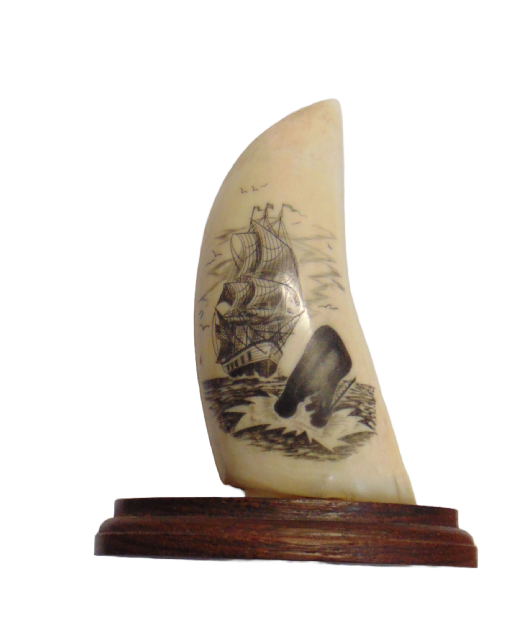

A collection of Clay Pipes found in and around Burntisland.
Many donated by Mr J. Fraser of Kirkcaldy
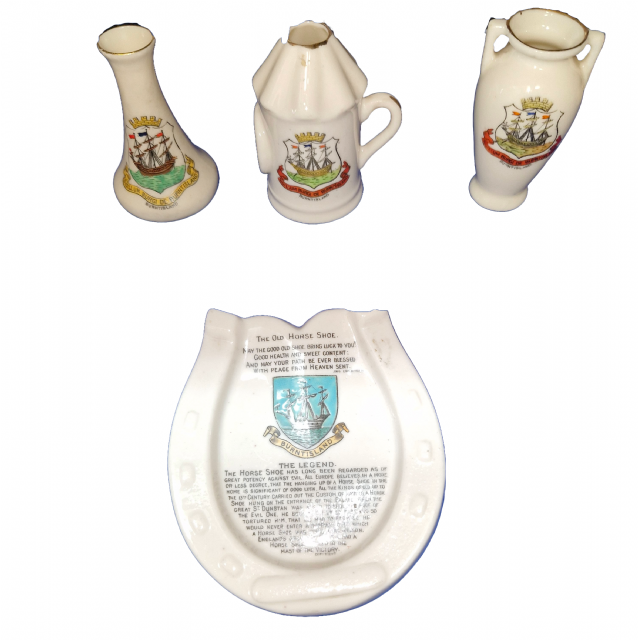
Part of our extensive range of Burntisland souvenir china.
Collection donated by Mr Derek Turnbull
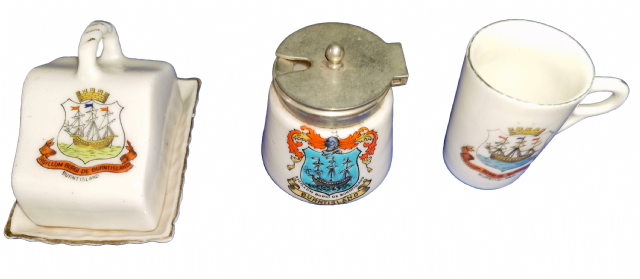
Part of our extensive range of Burntisland souvenir china.
Collection donated by Mr Derek Turnbull
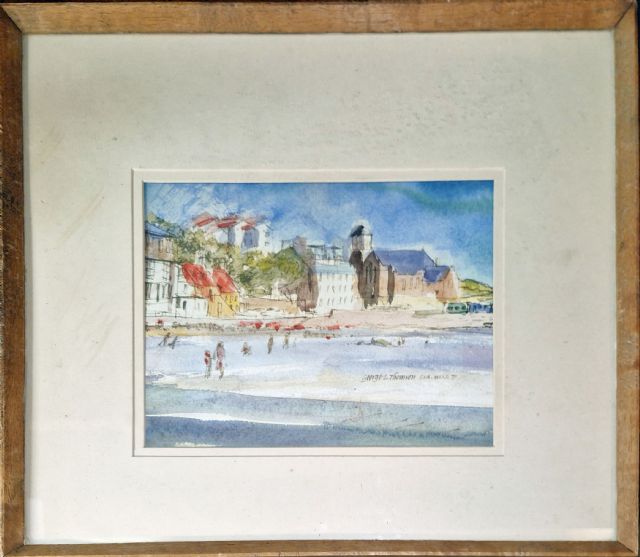
Kinghorn Beach (1)
The above watercolours are by George Thomson, some people in the town may remember him as an art teacher at Burntisland Secondary School. He was a well known calligrapher writing on the subject and carrying out commissions. The above paintings, were donated to Burntisland Heritage, by Mr McCulloch, who's family owned the Sandhills caravan park in Kinghorn.





















